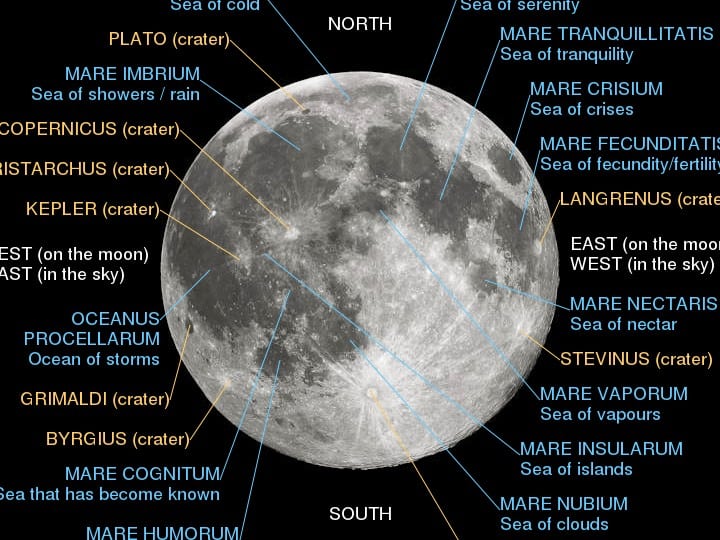The moon, our planet’s second largest celestial body, has been a subject of observation dating back to ancient times.
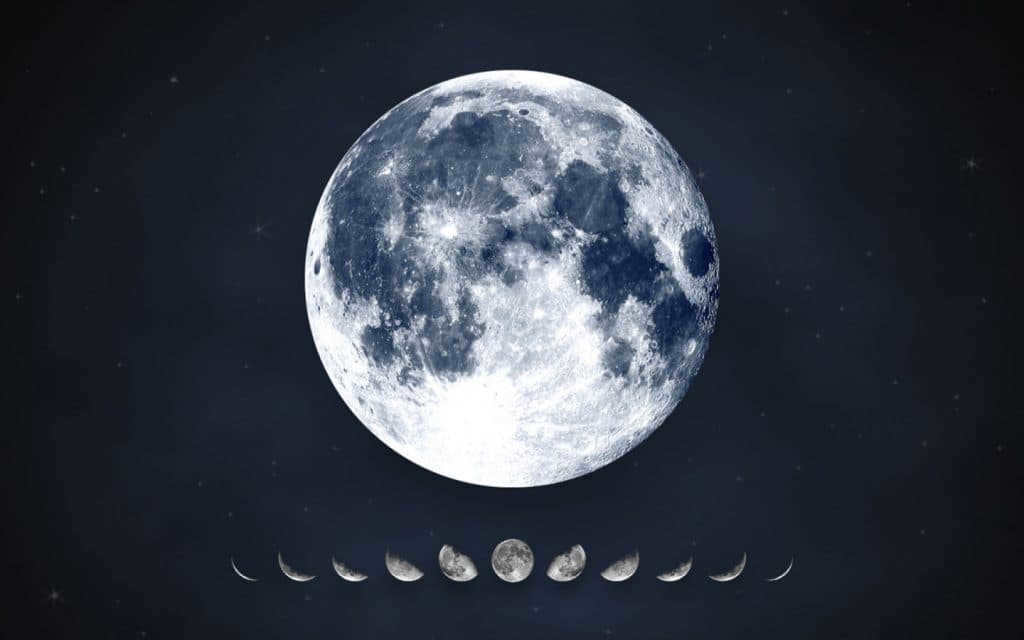
The unaided eye can perceive the unevenness of the Earth’s natural satellite’s surface, however, it was not until the invention of the telescope that the existence of craters on the Moon was revealed.
The Definition of Lunar Crater
The term “crater” was coined by the Italian astronomer Galileo Galilei. In 1609, Galileo constructed the first device for astronomical observation and, upon examining the Moon through it, he ascertained that its surface is not a smooth sphere, but rather exhibits a complex terrain with numerous depressions of varying sizes.
He labeled these depressions as craters, although he was unable to elucidate the nature of this phenomenon. The word itself is derived from the Greek language – in Greece, it referred to a vessel employed for mixing wine and water.
Presently in the field of astronomy, lunar craters (LC) refer to concave formations on the surface of celestial bodies, specifically planets, that take on the shape of a perfect circle. These craters can vary in diameter, ranging from a few centimeters to several hundred kilometers, and not only differ in size but also in their depth.
Located along the perimeter of the LC are circular ridges composed of rocks that have been ejected during a meteorite impact, yet have not dispersed far from the site. The bottom of these craters tends to be flat and situated below the lunar surface, while the outer part of the ridge extends above it.
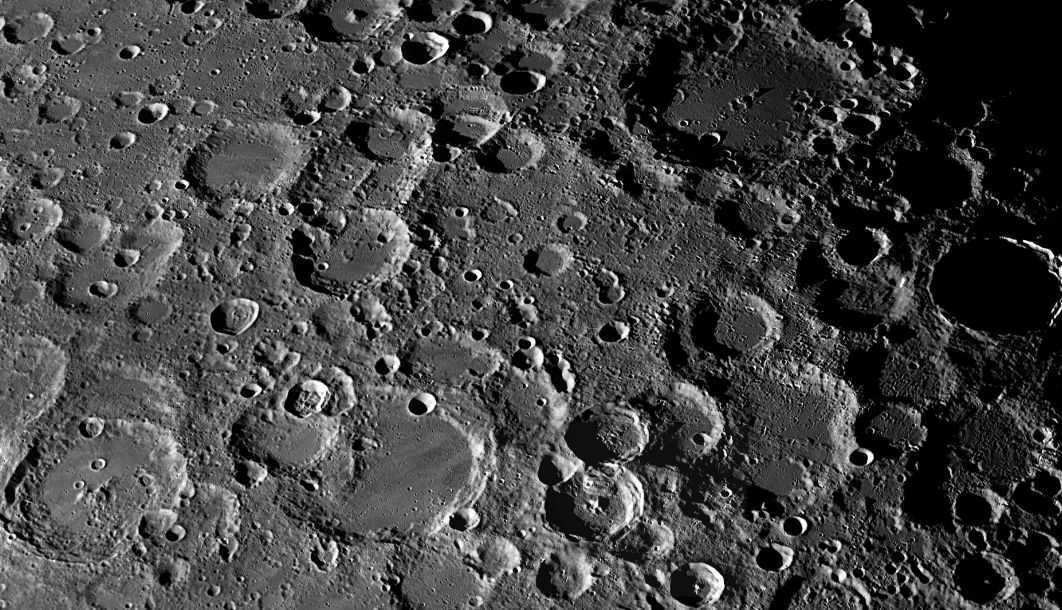
The Formation of Craters on the Moon
The Moon is an uninhabited celestial body that lacks an atmosphere. The prominent features on its surface are the “seas” and “oceans” – vast dry lowlands covered in solidified lava. The higher regions between these lowlands are referred to as “continents.” Upon closer examination, one can observe numerous crater formations scattered across the entire surface of the lunar seas and continents.
There are two theories explaining the origin of these craters:
Due to the Moon’s lack of atmosphere, water, and active geological processes, even the oldest lunar craters have remained unchanged since their formation. They have retained their original state throughout their entire existence.
The theory of lunar craters
Originally proposed in 1824 by Franz von Gruithuizen, the shock theory suggests that the formation of lunar craters is caused by the bombardment of the Moon’s surface by objects from outer space.
For a considerable period of time, this theory faced skepticism. It was believed that the traces left by space objects hitting the Moon at an oblique angle would have an elliptical shape, whereas most craters are predominantly round.
In the early 20th century, New Zealand scientist A. Gifford provided evidence that objects moving at cosmic speeds tend to vaporize upon impact with a solid surface, and the angle of their descent does not significantly affect the shape of the resulting crater.
According to current astronomical understanding, the majority of lunar craters are formed through impacts.
The concept of internal activity
Originally put forward by Johannes Schroeter in the late 1700s, the theory of internal activity suggests that the Moon experienced intense volcanic eruptions accompanied by explosive events.
According to this hypothesis, the formation of craters on the lunar surface took on the shape of a circular funnel with raised edges rather than a typical cone.
This theory posits that these eruptions were so powerful that they caused the craters to have a distinct shape.
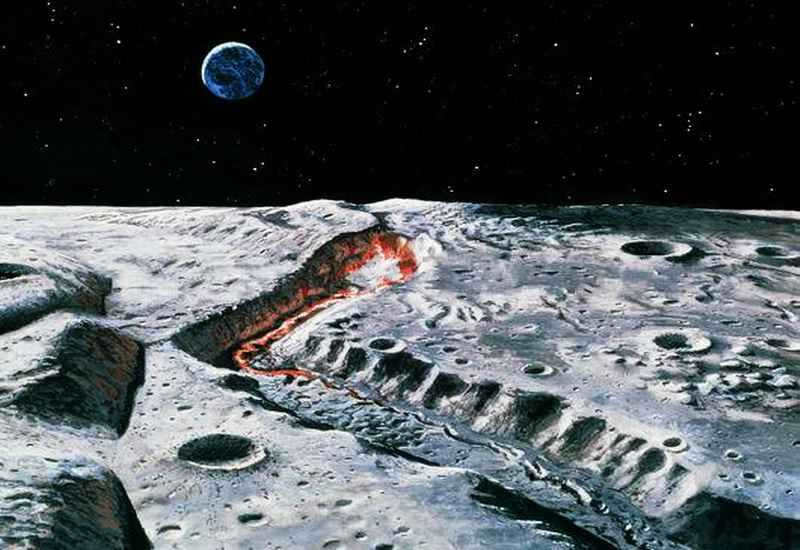
Similar volcanoes can be found not only on Earth but also on other planets within our solar system. These volcanoes, known as calderas, bear a striking resemblance to the LC. However, it’s worth noting that only a small portion of the craters found on the Moon can be classified as volcanic in nature.
The formation of both impact craters and volcanic craters results in more than just changes in the surrounding landscape. The intense heat and pressure associated with these formations cause significant physical and chemical transformations in the surface materials of celestial bodies, resulting in the creation of new minerals known as impactites.
Morphological Characteristics of Craters
After conducting a thorough visual analysis of numerous images captured by powerful telescopes and spacecraft, experts have identified nine distinct morphological features of lunar craters. Each of these features is assigned a numerical or alphabetical index for easy reference.
- Clarity of Rampart Outlines: This feature assesses the degree of preservation and outlines clarity of the crater’s rampart.
- Inner Slope Structure: This feature examines the presence of terraces and/or collapses on the inner slopes of the crater.
- Outer Rampart Characteristics: This feature focuses on the nature and size of the outer rampart.
- Bottom Formations: This feature determines the presence of any formations on the bottom of the crater.
- Chains and Radial Cracks: This feature identifies the presence of chains and radial cracks within the crater.
- Bottom Surface Nature: This feature describes the nature of the bottom surface of the crater.
- Lava Presence: This feature indicates whether there is any lava present on the bottom of the crater.
- Ray System Presence and Extent: This feature assesses the presence and extent of ray systems associated with the crater.
- Type of Underlying Surface: This feature classifies the underlying surface as either sea, mainland, or a transition zone.
The LC shaft can vary in its definition, ranging from clear and distinct to vague and uncertain. It may also range in its condition, from still intact to completely destroyed. The walls of the crater bowl can exhibit different characteristics, sometimes having a flat surface, but more commonly being bounded by one or more scarps.
Frequently, these scarps can give rise to small or large collapse zones, as well as chains and cracks of various lengths.
LCs can have either smooth or uneven bottoms. They may contain a single peak positioned in the center, or multiple slides and ridges scattered throughout the region.
Occasionally, there are specks of solidified lava on the bottom, while other times the entire bottom surface is covered in lava. The radiation systems surrounding the LC can extend for many kilometers in all directions from the center of the crater.
Determining the morphological characteristics of the craters on the far side of the Moon is challenging due to the image quality and strong shading of the areas next to the terminator, which is the line that separates the illuminated and dark parts of the Moon.
Leif Andersson and Charles Wood conducted a study in 1978, analyzing images of over 11,000 craters with cross-sections of 2 km or more. The researchers discovered that despite the large number of craters, a majority of them still share similarities.
In their research, the scientists categorized craters into five types, which account for 99% of all LCs (lunar craters). The classification system was named after the acronym of the laboratory where the study took place.
The five types of craters are as follows:
– Al-Battani (ALC)
– Bio (BIO)
– Sozigen (SOS)
– Trisnecker (TRI)
– Tycho (TYC)
The ALC and BIO types are considered simple and encompass most LCs with diameters smaller than 10 km. These craters resemble a traditional bowl shape with smooth sides, but BIO craters have a smaller and flatter bottom compared to ALC.
SOS-type depressions are characterized by a wide, flat bottom and the lack of terraces and central peaks. The origin of this unique feature is still unknown – it is unclear whether they were originally formed this way or if they transformed into basin-like structures due to subsequent meteoric impacts.
LCs with diameters ranging from 10 to 50 km fall into the TRI-type category. They are distinguished by the partial collapse of the inner walls of the bowl. Occasionally, there are specimens with a peak in the center of the bottom.
Most LCs larger than 50 km in diameter resemble the Tycho crater, thus belonging to the TYC type. Their bottoms are deep, often featuring a prominent peak in the center, and the walls consist of terraces that merge into one another.
If the diameter of the crater bowl exceeds 200-300 km, central peaks are not present, and the craters take on the form of basins.
The reason for the more intricate formation of TRI and TYC is the greater amount of energy released when larger bodies collide.
The most massive impact craters on the Moon
Below is a table summarizing the largest impact craters on the visible side of the Moon:
| Name | Diameter, km | Depth, km | Age, billion years |
| Luna Bay | 300 | 4.13 | 3.85 |
| Shikkard | 227 | 1.5 | 3.65 |
| Clavius | 225 | 3.5 | 3.9 |
| Humboldt | 207 | 5.16 | 3.5 |
| Jansen | 190 | 2.9 | 4 |
| Petavius | 184 | 3.33 | 3.8 |
| Maggini | 156 | 5.05 | 4.3 |
| Wendelin | 147 | 2.6 | 4 |
The largest crater on the far side of the Moon is named after the Danish scientist Einar Hertzsprung. The crater is surrounded by several shafts and has a diameter of 591 km.
The vast Tycho and Copernicus basins cannot be observed from our planet. Tycho crater features an extensive system of rays, while Copernicus crater is known for its relatively flat floor and a central peak rising 2.2 km above it.
There has always been a great fascination with learning about the Moon, our planet’s only natural satellite. The Moon is located at an average distance of 384,403 kilometers from Earth. Interestingly, the back side of the Moon is not visible from Earth, making it impossible to capture photographs of it without the aid of space probes. One of the most intriguing aspects of the Moon that captures our attention are the craters that dot its surface.
In this article, we will explore the various features, formation, and fascinating characteristics of the Moon’s craters.
Main features
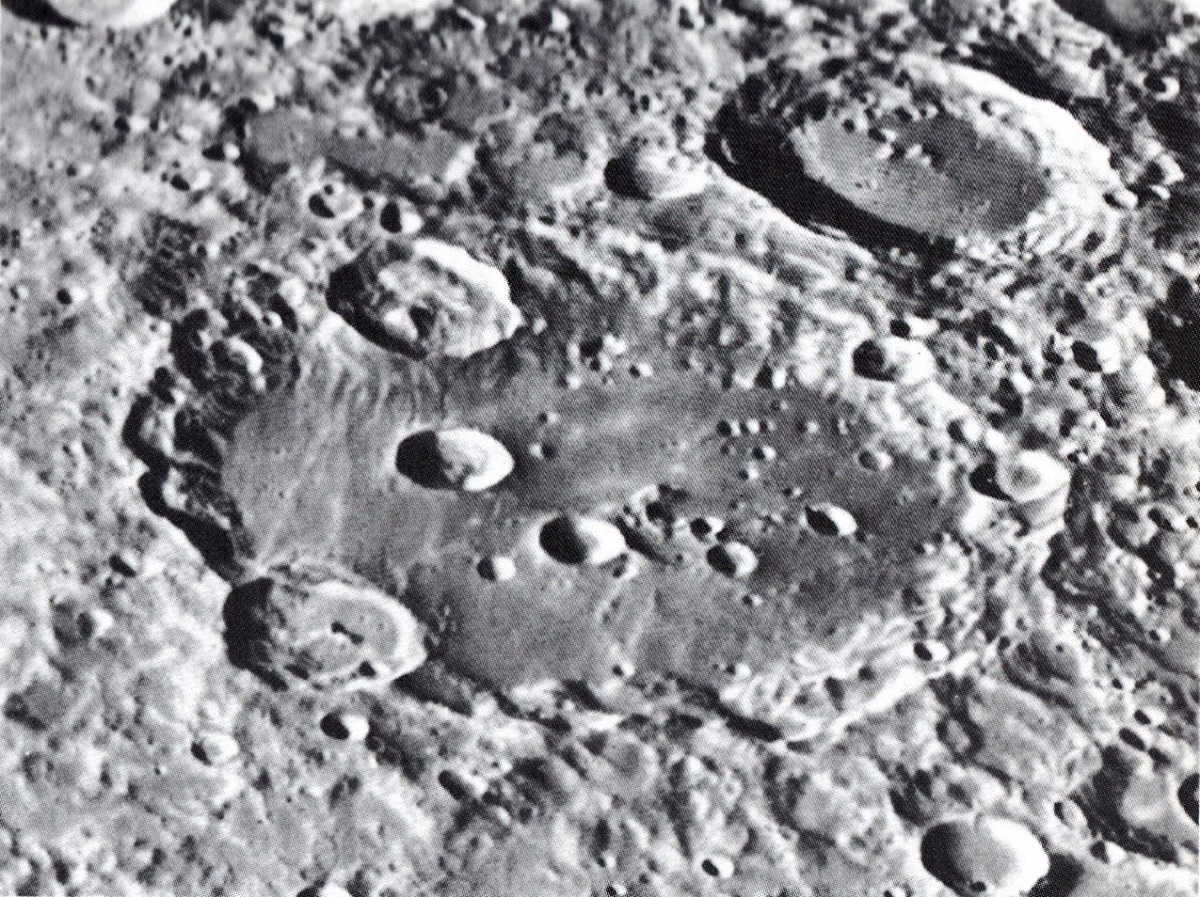
First, let’s examine a few features and gain a comprehensive understanding of the craters on the Moon. The Moon has a diameter of 3474 kilometers. The far side of the Moon is distinguishable from the near side in terms of average elevation and the rate at which formations occur. Many of the awe-inspiring photographs captured on the Moon’s surface by space probes are taken from the side that is unseen from Earth.
The birth of the moon has long been a topic of scientific discussion. Scientists have put forth numerous hypotheses regarding its origin, and have turned to the study of lunar rocks in order to gain insight into this fascinating phenomenon. These rocks are composed of materials that originate from the mantle of massive celestial bodies. For instance, they may have formed as a result of the violent collision between these materials during the early stages of Earth’s formation.
One possibility is that the Moon’s origins lie in the accumulation of material that was expelled during a significant event. During the early stages of our planet’s formation, it experienced a massive collision with a Mars-sized planet, which also had a differentiated structure with a core, mantle, and crust. This collision occurred at a particular angle and with considerable force, causing the metal cores of both planets to melt. While the cores merged, the mantle materials from both objects were ejected, although they remained gravitationally bound to Earth. Over time, these materials gradually came together to form what we now know as the Moon.
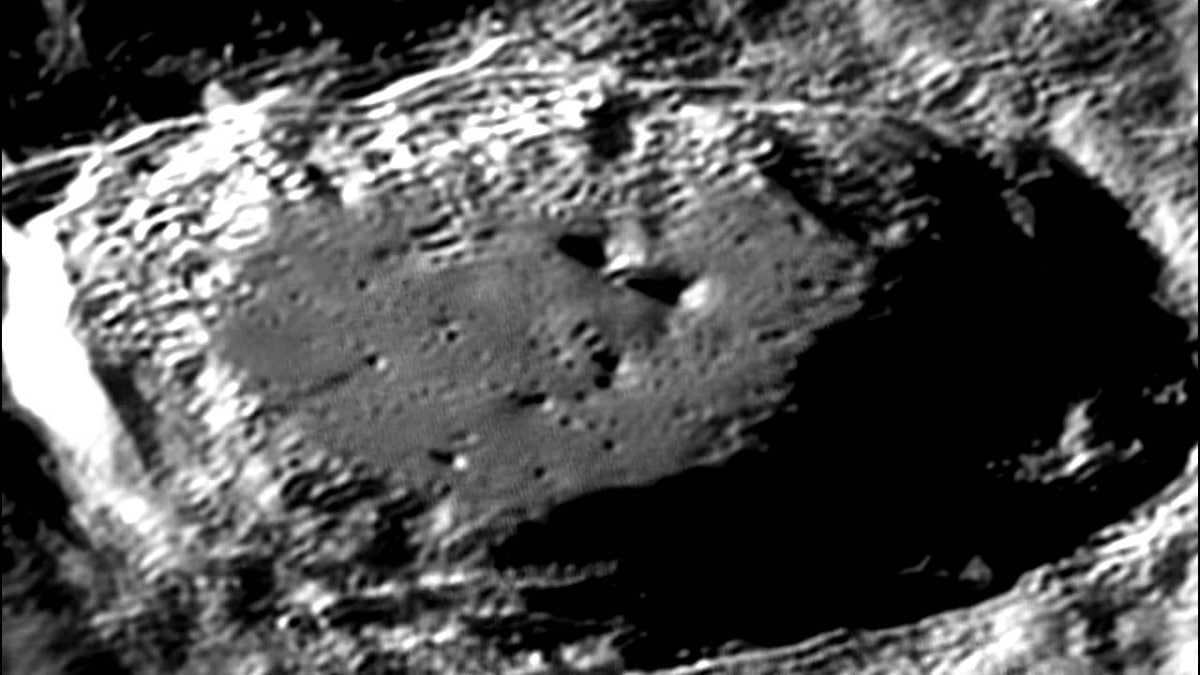
Scientists have long been conducting research on the age of rocks, both on Earth and the Moon. These rocks originate from specific regions that have enabled scientists to determine when the formations occurred. By examining lighter areas on the Moon known as plateaus, scientists have uncovered valuable information about the Moon’s formation. It has been determined that the Moon formed approximately 4.6 to 3.8 billion years ago, and subsequent rock samples retrieved from the Moon’s surface indicate that this formation process was relatively rapid. The bombardment of rocks ceased, resulting in the formation of numerous craters.
Some of the rock samples recovered from these craters have been identified as basins, and they date back approximately 3.8 to 3.1 billion years. Additionally, there have been samples of massive asteroid-like objects that impacted the Moon shortly after the rock bombardment ended.
Following these events, an abundance of lava quickly filled the basins, resulting in the creation of dark seas. This phenomenon is the reason for the scarcity of craters in the seas, while the plateaus boast a considerable number. The explanation lies in the fact that the plateau did not experience many lava flows that would have eradicated the original craters. This absence can be attributed to the bombardment of the Moon’s surface by planetesimals during the solar system’s formation.
Interestingly, there is only one “mare” on the far side of the Moon. Scientists believe that this area reflects the movement of the Moon approximately 4,000 billion years ago.
Geography of the Moon
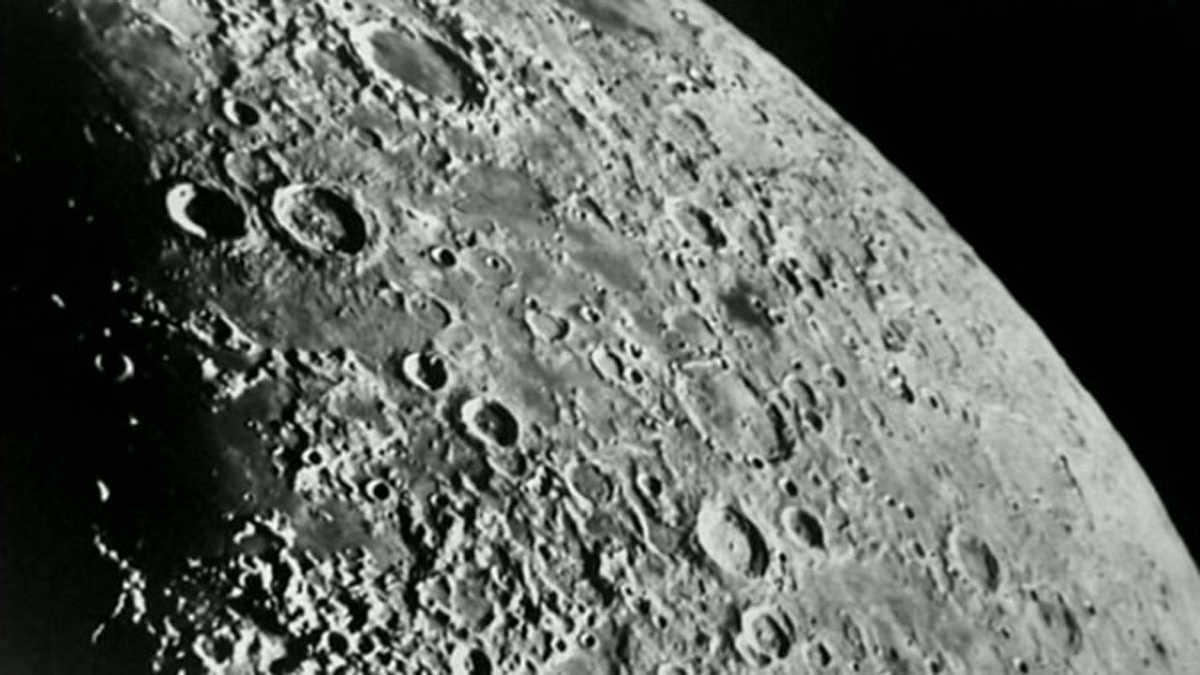
To explore the craters on the Moon, it is necessary to have knowledge about the lunar geography. This includes understanding the different types of plains, such as the flat ones or those that used to be part of the lunar seas. Interestingly, the Moon’s satellite had its own seas, with the largest one being the Mare Dembrium. In Spanish, it is referred to as the Sea of Rain, and it measures approximately 1,120 kilometers in diameter.
We can discover numerous lunar seas encircled by magnificent mountains and ranges that have been titled after terrestrial mountain ranges such as the Alps, the Pyrenees, and the Carpathians. The most elevated mountain range on the Moon is Leibnitz, with its highest summits soaring up to 9,140 meters in height. This surpasses Mount Everest, the tallest mountain on Earth.
There is an abundance of craters on the Moon, with the potential for overlap. As a result, there are thousands of deep valleys known as lunar fissures, spanning anywhere from 16 to 482 kilometers in length and approximately 3 kilometers wide.
The formation of these fissures can be attributed to the presence of surface cracks, which act as a precursor to weaker fractures caused by heat and internal expansion.
By delving into the details provided, you can enhance your understanding of the Moon’s craters and its surface composition.
This article adheres to our editorial ethics guidelines. Please click here to report any inaccuracies.
Summary of the Full Article: Network Meteorology " astronomy " Exploring the Moon’s Craters
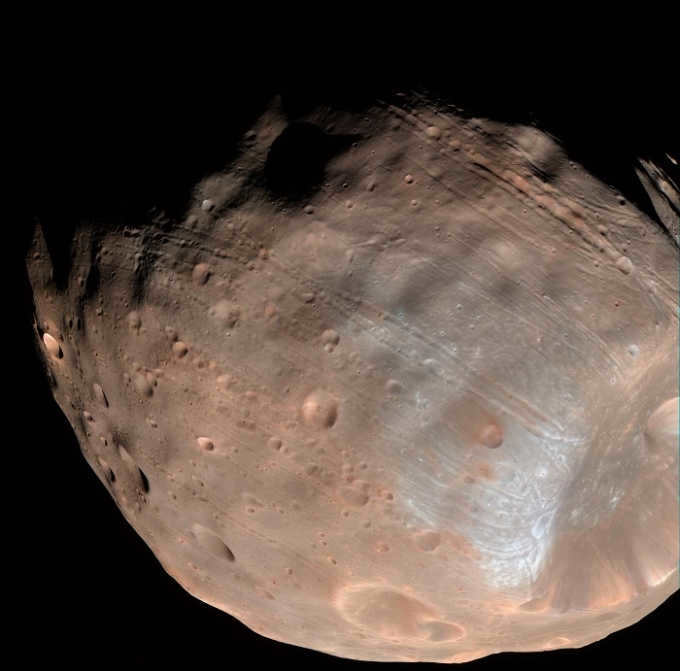
It is common knowledge that the Moon is adorned with numerous craters. However, not everyone is aware that the Earth is also marked by craters caused by meteorite impacts. In this article, I will shed light on the topic of meteorite craters, both in general and specifically on Earth.
Two Theories on the Origins of Lunar Craters
In 1609, Galileo, the inventor of the telescope, turned his gaze towards the Moon and made a remarkable discovery. He observed that the Moon’s surface was marked by bowl-shaped depressions of various sizes, encircled by circular mountain ranges. Galileo named these unique formations after the Greek wine bowl, although their true nature remained a mystery.
Fast forward to the late 18th century, when Johannes Schroeter proposed an intriguing hypothesis about the origin of lunar craters. He suggested that these craters were not formed by conventional volcanic activity, but rather by powerful explosive eruptions. Unlike typical volcanoes on Earth, which produce a conical shape, these explosive eruptions would result in a crater surrounded by a shaft. Interestingly, similar volcanic formations known as calderas can be found on our planet, bearing a striking resemblance to lunar craters.
In opposition to this hypothesis, which gained widespread acceptance in the scientific community, Franz von Gruithuizen proposed in 1824 that craters had a meteoric origin. However, this theory was deemed weak due to its inability to account for the prevalence of circular craters. If craters were formed by oblique falls, they should have been oval in shape. As a result, this theory remained unpopular for an extended period of time.
It was not until the first half of the 20th century that it became clear, due to advancements in understanding high-speed impacts (which were of great importance in military contexts), that the perceived weakness of the meteorite theory was unfounded. When two objects collide at cosmic velocities, it results in an explosion that instantaneously vaporizes the meteor body and the rocks at the point of impact on the planet’s surface. The system “forgets” about the direction from which the meteoroid arrived. As gases and vapors expand and shock waves propagate, they do so in all directions uniformly, resulting in the formation of a round crater regardless of the body’s trajectory. This process was initially described qualitatively in 1924 by the New Zealand astronomer A. Gifford, and later developed by the Soviet scientist K.P. Stanyukovich, who was a student at the time of the theory’s first publication in 1937.
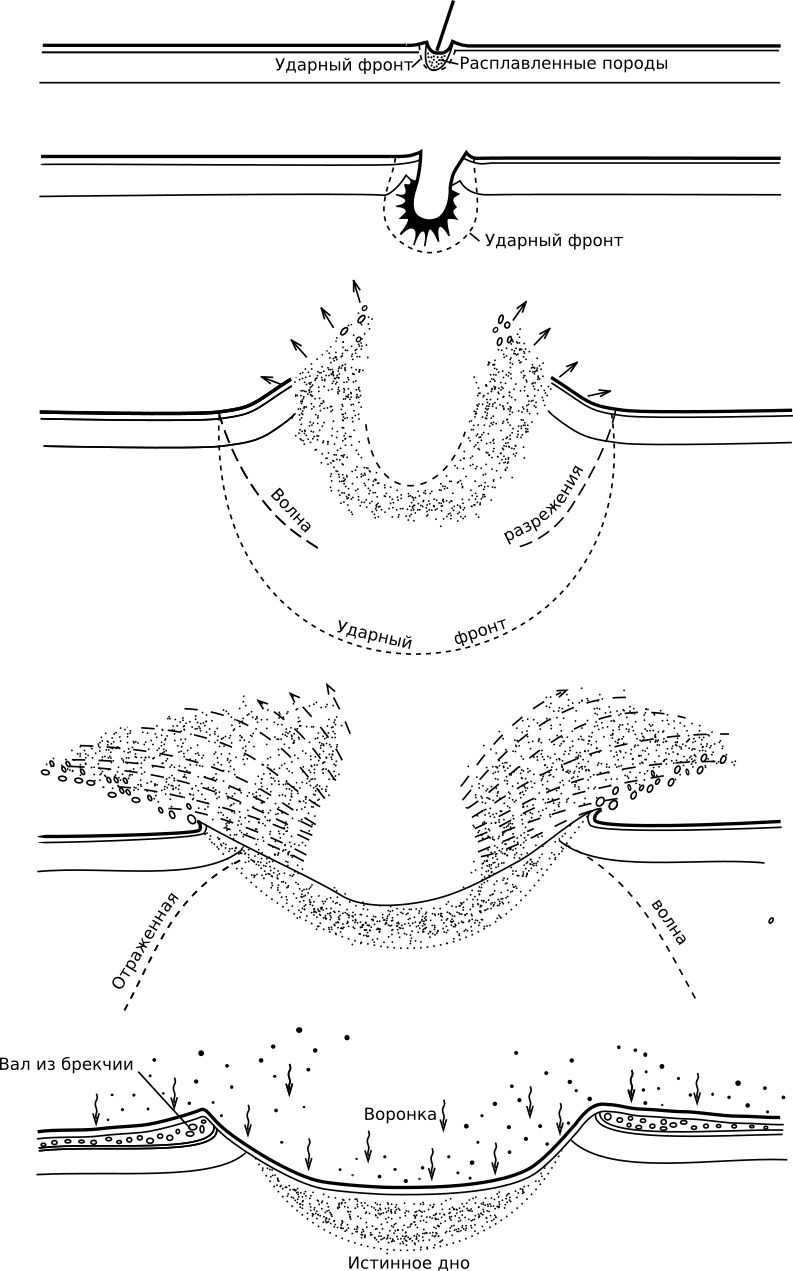
(from the book: Khryanina L.P. Meteorite craters on Earth. Moscow: Nedra, 1987. C. 16).
Furthermore, the hypothesis of volcanic origin for lunar craters was definitively disproven by interplanetary space flights. These flights revealed that not only the Moon, but also Mercury, the ancient surfaces of Jupiter and Saturn’s moons, and even the small Martian satellites Phobos and Deimos are densely dotted with craters, making it highly unlikely that volcanic activity is responsible. The intensity and nature of crater formation is likely influenced by factors such as the structure, mass, and size of the celestial body, but these factors have no impact on the overall crater density. It has been determined that the cause of crater formation is not internal, but rather external to the planets. And that cause is meteorite bombardment.
Not only have meteorite craters been discovered on other planets, but also ring structures similar to those on the moon have been found on Earth. With the advent of aerial and space photography, dozens of these structures have been uncovered, bringing the total number known to over 160.
For instance, there has been longstanding knowledge of a crater located in Arizona. Its geological description was first documented by A.E. Foote in 1891. Foote discovered a unique formation – a depression with a diameter of 1200 meters and incredibly steep slopes, surrounded by a 30-65 meter high rim. The crater reaches a depth of 180 meters, with its bottom lying well below the surrounding plain. However, the most peculiar aspect was the absence of any volcanic activity within the crater, such as lava or tuff. Only limestone was present, with its layers twisted and jumbled backwards along the rim, and mangled or crushed inside the crater, sometimes even ground into flour. The crater was known to the indigenous people as Devil’s Canyon, and they discovered nuggets of iron within it, which they utilized for their own purposes. This led to the assumption that the crater originated from a meteorite impact. During his expedition, A.E. Foote found a 91-kilogram block of meteoritic iron three kilometers away from the crater. Subsequent studies in the crater revealed a significant amount of meteoric material, ranging from small particles formed by vapor condensation to large pieces of iron. The Arizona crater is characterized by highly oxidized spheres, about the size of cannonballs, with a shell-like structure. These spheres were formed through the process of melting, vaporization, and condensation of the meteoroid upon impact. Geophysical studies estimate the total mass of metal in the crater to be in the tens of thousands of tons, excluding a certain amount of relatively unchanged meteorite fragments. This metal has been extensively remelted and no longer retains the original characteristic structure of meteoritic iron. Additionally, bloated and foamed vitreous material resembling pumice was found – this glass was formed from the melting of the ground during the impact (similar glass has been subsequently found in areas of nuclear explosions). The rocks within the crater, aside from those formed after its creation (a Pleistocene lake once existed at the bottom, leaving behind a layer of sediment that helped determine the crater’s age), have undergone significant alteration due to shock metamorphism caused by shock waves, ultra-high temperatures, and pressures. These discoveries undoubtedly confirm the meteoritic origin of the crater.
While not the largest or most prominent meteorite crater, Arizona Crater stands out as one of the most well-preserved impact structures on Earth. Unlike lunar craters, which are eroded over time, many ancient astroblems on Earth no longer resemble traditional craters. Instead, they can only be identified by the presence of distinct fracture systems, fragmented brecciated rocks showing signs of melting (including the formation of a unique magmatic rock called tagamite), evidence of shock metamorphism such as high-pressure phases like stishovite, coesite, and even diamonds, as well as deformed and cracked crystals of quartz and other minerals. Another characteristic feature of an impact event is the presence of fracture cones, which give rock fragments a cone-like appearance with the pointed end facing towards the center of the crater.
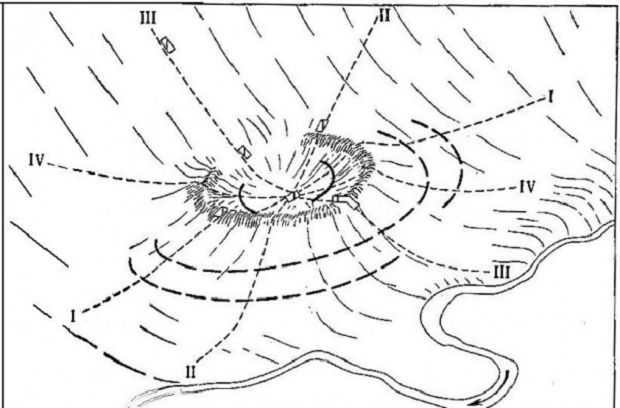
Regrettably, the Sobolevsky crater is currently undergoing gradual destruction due to prospectors, in contrast to renowned sites that are deemed one-of-a-kind natural landmarks and are diligently preserved to prevent their destruction – such as the Ries crater in Germany, the Wolf Creek crater in Australia, and the aforementioned Arizona crater, among numerous others.
Craters resulting from the explosive deceleration of high-velocity objects (even small ones like Sobolevsky) should be distinguished from craters formed by the slow descent of large meteorites and their fragments that have lost their cosmic velocity in the atmosphere. In these cases, there is no explosion or vaporization of the meteorite and target rocks, and the craters often take on an oval or elongated shape due to a gradual descent. These craters typically lack signs of impact metamorphism, although there may be characteristic fractures and fracture cones, as well as the formation of allogenic (debris ejected from the impact site) and authigenic (formed at the impact site) impact breccias and rock flour. Such craters have been discovered at the location where large fragments of the Sikhote-Alin meteorite fell. These craters are always small in size, typically not exceeding a few tens of meters. Despite the absence of an explosion during their formation, microscopic evidence of target rock melting can sometimes be found, such as tiny silicate glass beads, which have been observed in the largest craters of the Sikhote-Alin crater field.
In large impact structures, which span tens and hundreds of kilometers, the distinct characteristics of meteoritic origin become particularly pronounced. The rocks that were melted during the impact create pools of molten lava, which solidify into layered bodies known as tagamites. The fractures that form as a result of the impact penetrate deep into the lithosphere and give rise to secondary hydrothermal processes. There are two notable distinctions between impact structures and volcanic ones: their surface features and the extremely high temperatures reached in impact melts compared to terrestrial magma. This is evident in the widespread presence of cristobalite, which crystallizes at temperatures above 1700°C, and tridymite, which crystallizes at a temperature of 1450°C. These minerals are uncommon in igneous rocks.
Large impact structures display a unique feature known as a central uplift, also referred to as a “central slide.” This phenomenon occurs as a result of the release of stresses caused by the impact deformation. Additionally, some structures that span hundreds of kilometers exhibit a multi-ring structure. These multi-ring structures are well-documented on the Moon and were initially seen as evidence against the idea that craters were formed by meteorite impacts. It was believed that multiple meteorites would have to fall in the same location for this to happen, which was considered unlikely. However, further analysis of shock wave propagation and subsequent deformation resetting has revealed that the formation of multi-ring structures is indeed connected to this process. In fact, similar structures have been observed on a smaller scale in artificial craters created by nuclear explosions.
The Earth is home to some of the largest impact structures, spanning hundreds of kilometers in size. One notable example is the Chicxulub crater located on the Yucatan Peninsula. This immense crater, with a diameter of 180 km, formed during the transition from the Cretaceous to the Paleogene period, a time when dinosaurs vanished from the planet. Despite its colossal size, the Chicxulub crater cannot be visually observed on the surface. Its existence was confirmed through the identification of arc-shaped geophysical anomalies, while the meteoritic nature of the crater was substantiated by the discovery of impactites, which are partially molten breccias known as zuvites. Furthermore, a global geochemical anomaly known as the iridium peak is associated with this crater. The concentration of iridium in the layer corresponding to the Cretaceous-Paleogene boundary is tens of times higher than normal, indicating the evaporation of a vast amount of meteoritic material, where iridium far exceeds its typical abundance in the Earth’s crust. The asteroid impact that led to the formation of the Chicxulub crater undoubtedly had a profound global impact. The explosion’s force reached mountainous proportions, ejecting an immense quantity of dust into the atmosphere. This dust was primarily composed of condensed vaporized asteroid and target rocks, along with soot from widespread forest fires ignited by the shockwave and debris falling from space. The resulting dust cloud obstructed sunlight for several years, potentially causing the extinction event known as the Cretaceous-Paleogene extinction.
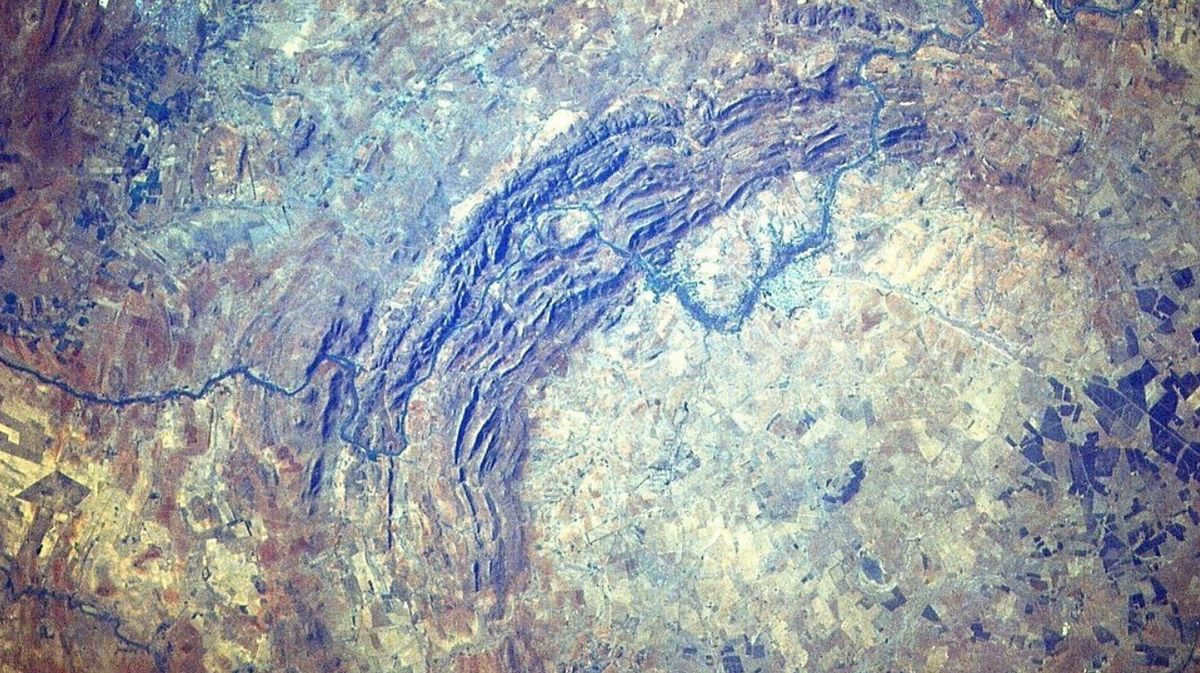
In contrast to the Chicxulub impact site, the Vredefort crater, with a diameter of 300 km, is easily distinguishable in images of space and remains the only perfectly intact multicircular formation on our planet. What makes its preservation even more remarkable is its age, estimated to be around 2 billion years.
As the size of the crater increases, its shape undergoes significant changes. Apart from the development of a central slide and subsequent multiring structures, as mentioned earlier, the crater becomes flatter as its diameter grows. Additionally, the formation of its shaft differs from small craters, as it consists of large thrust blocks rather than a mound of debris. Large-scale craters on a planetary level cannot be preserved on Earth due to plate tectonics. However, there is a speculative hypothesis suggesting that the Pacific Ocean could be the result of such a massive impact, or alternatively, that the initial oceanic crust and the movement of lithospheric plates were formed through the destruction of the primary continental crust by impacts from large celestial bodies.
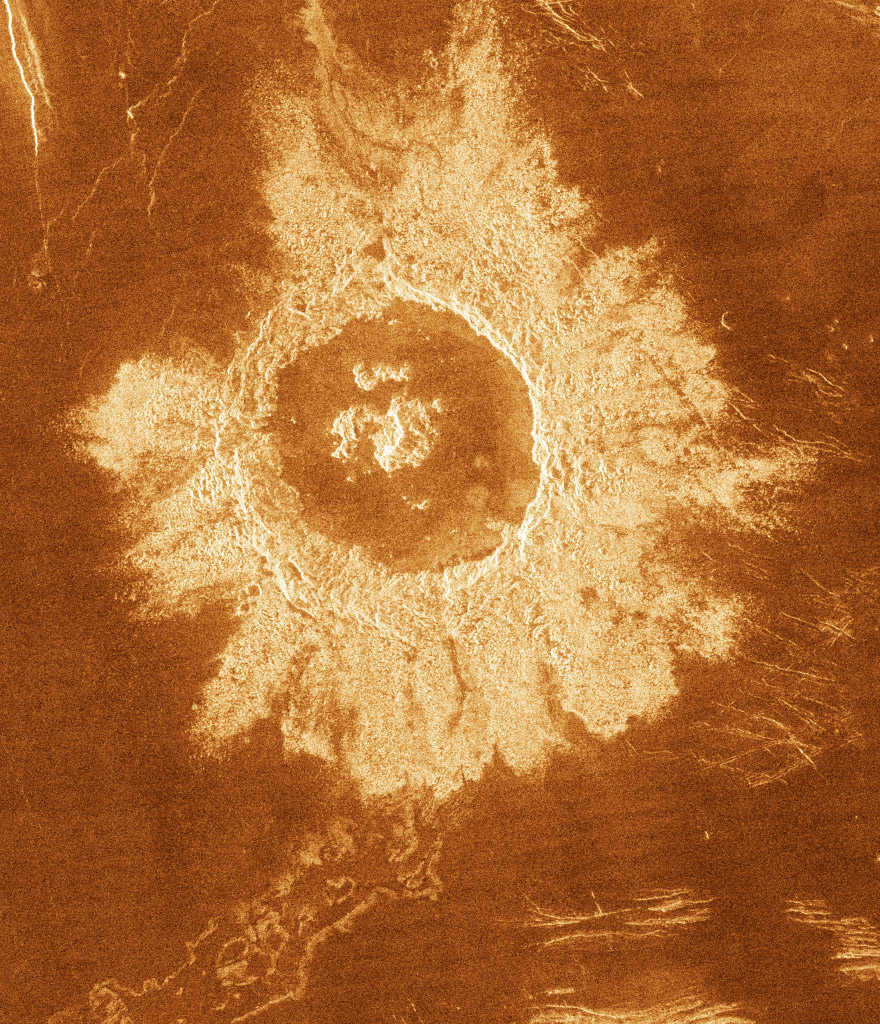
Similar to Earth, Venus has also been discovered to have craters that are believed to be caused by meteor impacts. These craters have been identified through radar imaging, which has allowed for the creation of detailed maps of Venus’ surface. Due to Venus’ extremely dense atmosphere, only large meteoroids are able to penetrate through it while maintaining their cosmic velocity. As a result, the minimum size of craters on Venus is estimated to be at least tens of kilometers in diameter. Just like on Earth, the craters on Venus are susceptible to erosion and the effects of tectonic activity, leading to their eventual destruction. As a result, there are only a limited number of craters present on Venus.
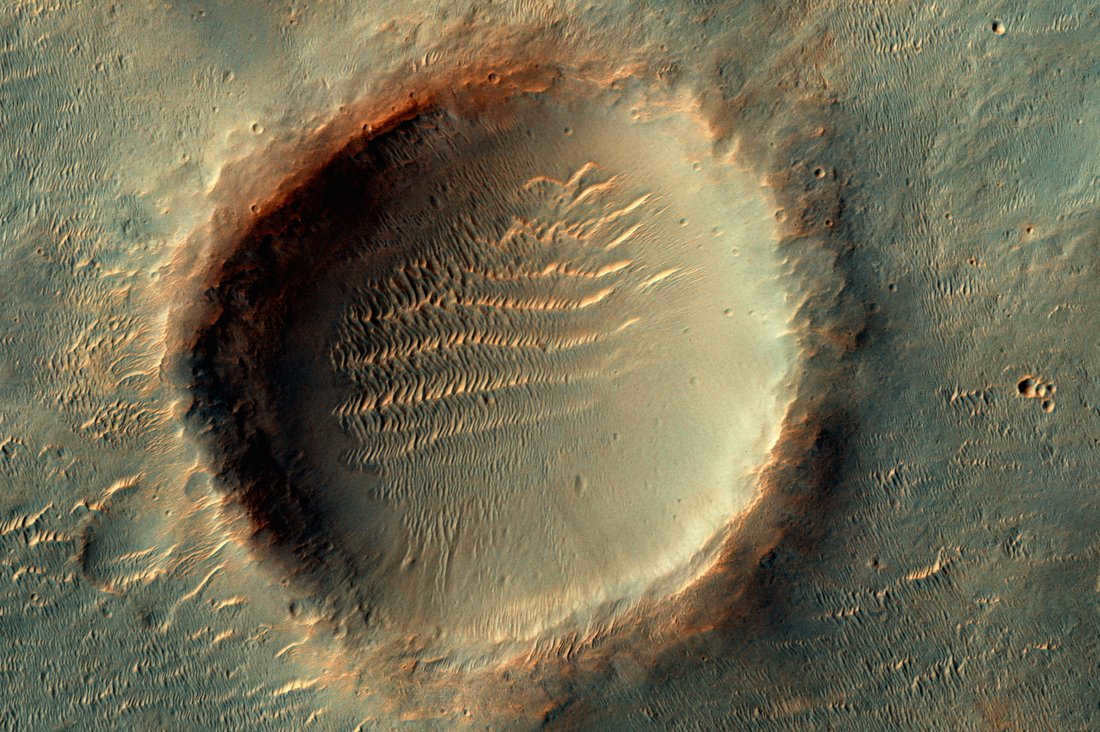
There are numerous craters present on Mars as well. The Martian atmosphere does not provide much protection against space bombardment, except for micrometeorites. However, most of the smaller craters on Mars get quickly covered with sand, which is why the surface of Mars appears to have fewer craters in large-scale images compared to the Moon. Nonetheless, the density of larger craters that are not affected by wind erosion and sand accumulation is similar on both the Moon and Mars. Additionally, similar to the lunar seas, Mars also has areas that lack craters. This can be explained by the fact that these areas are relatively young and have undergone processes in the recent past that have destroyed the previous landscape, including impact-related features.
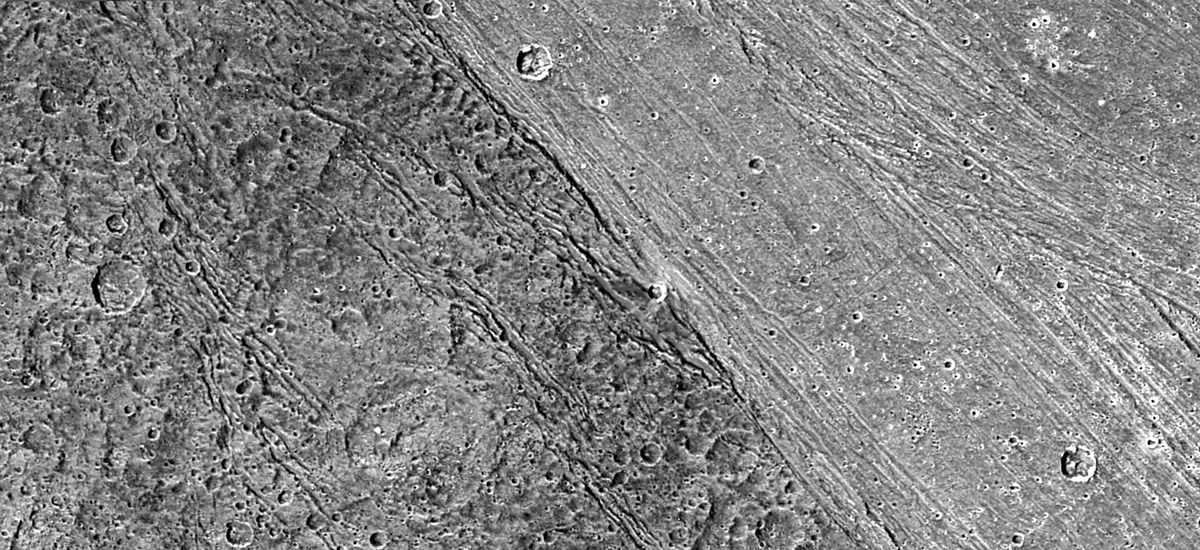
Therefore, the density of craters serves as a characteristic that allows us to estimate the approximate age of a planet’s surface and differentiate between older and younger regions. This phenomenon is particularly evident on the Moon, where there are heavily cratered ancient continents and seas with a lower density of craters. These younger areas are estimated to be about a billion years younger than the rest of the lunar surface. Similar patterns can be observed on Ganymede, where the strips of young crust also exhibit a significantly lower number of craters compared to the ancient “continents” that have a crater density similar to that of the Moon.
While planets with atmospheres have a limit to the size of craters they can have, non-atmospheric planets do not have such a limit. There is a continuous relationship between the frequency of craters and their size, from the largest planetary-scale craters to the smallest microscopic ones, which suggests that they share the same mechanisms of formation.
Planets without a dense atmosphere always experience some level of surface modification due to meteorite bombardment. Without an atmosphere and significant tectonic or volcanic activities, meteorite impacts are the primary force that alters the surface. Over billions of years, this bombardment results in the accumulation of a layer of regolith. Regolith is not simply crushed and ground-up bedrock; it undergoes extensive shock-metamorphism, melting and rapid cooling, evaporation and condensation in a vacuum, and fractionation, leading to the formation of new minerals, including some that are quite unique.
The Wealth of the Arizona Meteorite Crater
During the exploration of the Arizona meteorite crater, a unique opportunity arose amidst a frenzy similar to the famous “gold rush”. The crater was acquired by Daniel Barringer, who had high hopes of extracting a meteorite of massive proportions – estimated to be around 120 meters in size and weighing over ten million tons of pure iron. This would provide an unimaginable fortune, as no smelting or refining would be required. The potential wealth was simply waiting to be claimed.
Under certain circumstances, specific configurations of meteorite craters can lead to the creation of mineral reserves. One instance of this phenomenon is observed in the dome-shaped formations of central elevations within large astrobles, which frequently serve as hosts for oil deposits (such as the Sierra Nevada oil fields in Red Wing, USA). Additionally, the Boltysh crater depression has become a notable location for the accumulation of sapropelic oil shale deposits.
Non-meteoritic craters
Enthusiasts, in their quest for discovery, frequently come across what they believe to be new meteorite craters in space images. However, many of these structures are already well-known and have nothing to do with impact processes.
A perfect example of this is the “astroblema” Kondyor in Khabarovsk Krai. Despite persistent myths about its meteoric origin, the geological structure of Kondyor is actually quite different from that of a typical meteorite crater. It is formed by a shtoko-shaped body composed of ultramafic igneous rocks (such as dunites and pyroxenites) that extend deep into the Earth’s crust. In contrast, impact structures are found near the surface and disappear with depth.
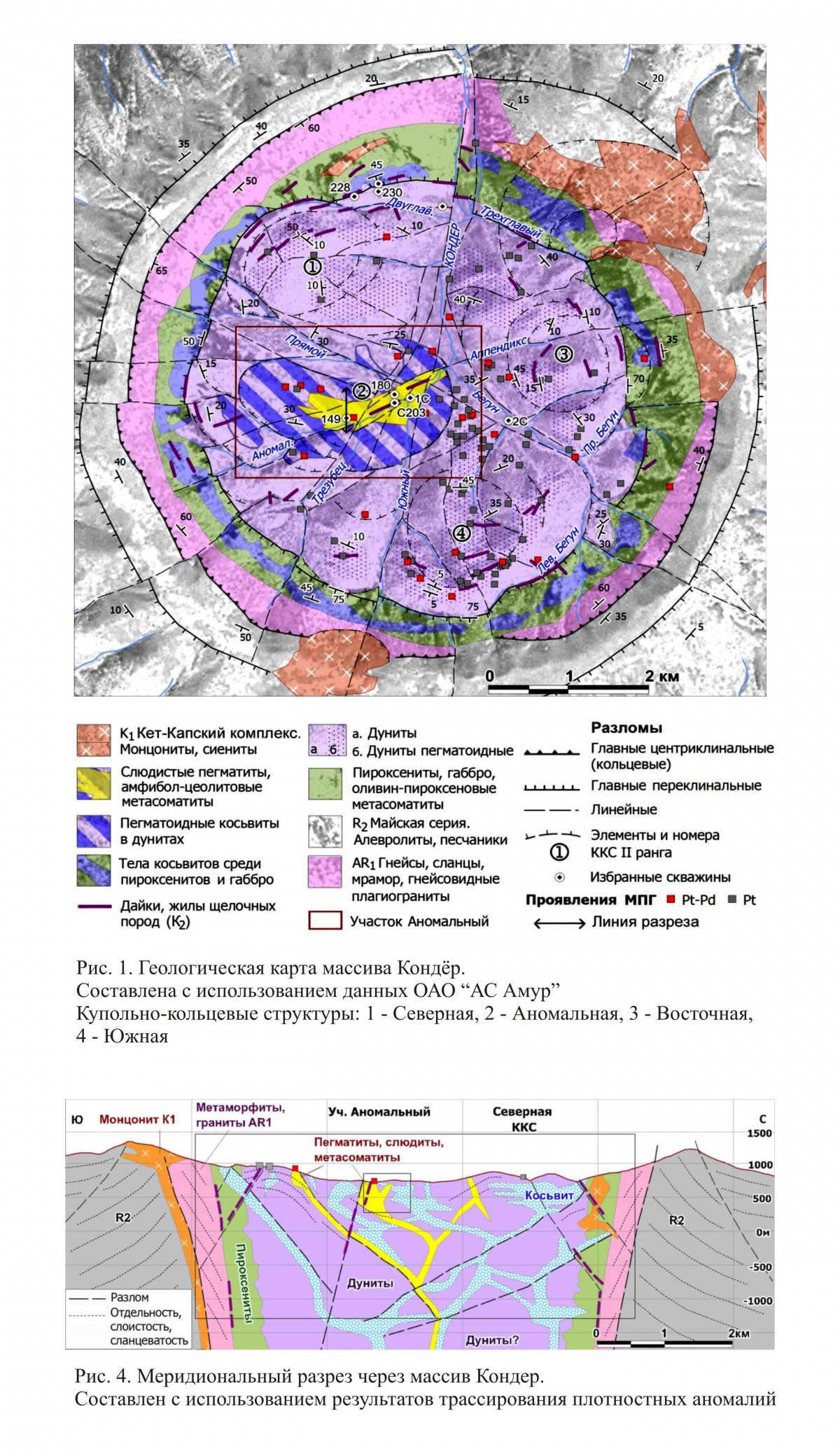
There is no evidence of a meteoritic source in another circular formation, frequently referenced as an instance of an astroblem – the Rishat structure in the Sahara. The true nature of this phenomenon known as the “eye of the Sahara” has yet to be definitively determined, but it is widely accepted that it is not a crater.
One more instance of a potential pseudo-crater is Lake Smerdyachie located in the Shatursky district of the Moscow region. Numerous online publications don’t even question its meteoritic origin. However, the theory of Smerdyachy’s meteoritic origin is still being considered, but there is currently insufficient data to confirm it. There have been occasional discoveries of impactite-like material, which are fragments of red-brown rock made up of melted grains of various minerals (such as quartz, feldspar, and zircon) fused together with bubble glass. Additionally, the depression’s geometry bears resemblance to meteorite craters of a similar size. Apart from these observations, there is nothing else that supports the claim, except for the strong desire of the article’s author (Yengalychev S.Yu. Meteorite crater in the east of the Moscow region. // Bulletin of St. Petersburg University. 2009. Ser.7. Vyp. 2. С.3-11) to classify this lake as a meteorite crater.
The process of surface transformation caused by impacts is a unique mechanism that alters the solid surfaces of all celestial bodies with solid surfaces, including planets, satellites, minor planets, and asteroids, down to the level of cosmic dust particles. Furthermore, even a meteoroid that creates a crater on the Moon or Earth has experienced previous impacts. Craters are absent only where there is no solid surface. However, even on gas giants like Jupiter or Saturn, when an asteroid or comet penetrates the dense layers of the atmosphere and subsequently explodes, a phenomenon that closely resembles meteorite craters emerges within the cloud layer, albeit temporarily. What about planets and their satellites with solid surfaces? The lack of visible craters does not necessarily imply that they do not form; rather, active erosion or tectonic activity can erase these features from the surface of the celestial body.
Crater creation is a complex alteration of surface topography. It involves extensive physical and chemical transformations of the surface material, resulting in the formation of impactites – novel rock types – as well as the creation of new minerals under extreme temperatures and pressure.
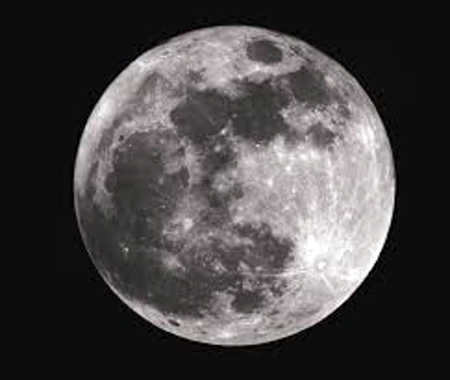
If humans possess the capability to think logically, they can ponder upon the sun, moon, and stars, and appreciate the bounties of the earth and sea – thus, they are not solitary and powerless.
/Epictetus
Throughout the course of recorded history, individuals have closely observed the Moon. This solitary satellite of our planet still captures inquisitive gazes, emerging as a significant component of the beliefs of diverse civilizations, their rituals, traditions, and signs. What exactly are the enigmatic dark spots on the Moon and what is their origin?
Lunar Topography
In ancient times, there was a belief that the lunar landscape mirrored that of Earth, with dark spots representing seas and light spots representing land. However, advancements in scientific understanding have since confirmed that our moon lacks an atmosphere, thus ruling out the presence of liquid water on its surface. Through extensive research and observations, scientists have been able to create detailed maps of the unique lunar topography. The dark spots, previously thought to be seas, are actually enormous craters formed from collisions with celestial bodies and subsequently filled with molten lava. Despite this revelation, these formations are still referred to as seas, harkening back to ancient times.
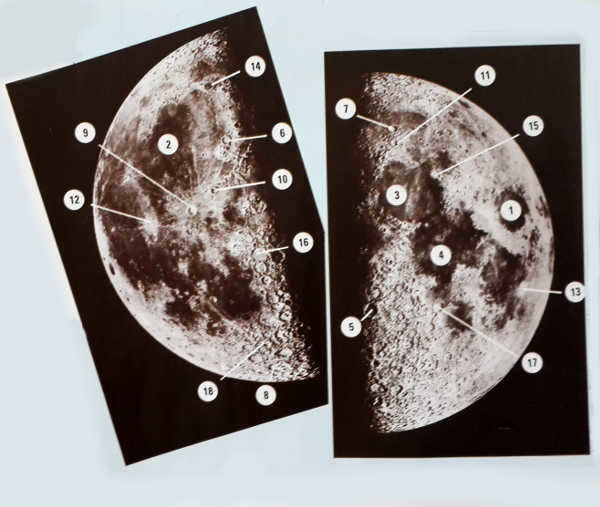
Using a pair of binoculars, one can observe numerous features on the surface of Earth’s everlasting satellite. The dark lowlands, also known as seas, are distinctly visible. Craters and mountains are accentuated by the relief shadows that align along the terminator line, which marks the boundary between the illuminated and shaded regions of the lunar surface. During a full moon, there are prominent radial streaks emanating from the craters, likely a result of soil ejected in all directions due to meteorite impacts.
- Crises Sea
- Rain Sea
- Clarity Sea
- Tranquility Sea
- Al-Battani
- Archimedes
- Aristotle
- Clavius
- Copernicus
- Eratosthenes
- Eudoxus
- Kepler
- Lungren
- Plato
- Ptolemy
- Theophilus
- Tycho
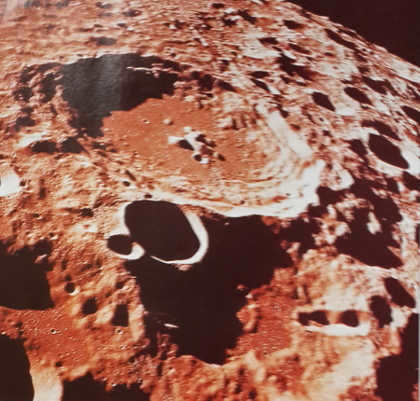
Captured by the Apollo 11 crew, the massive lunar crater, measuring approximately 80 kilometers in diameter, resides on the far side of the Moon and remains hidden from the view of Earth. The astronauts successfully gathered and transported back to Earth around 20 kg of lunar rock samples.
Craters encompass nearly 40% of the entire visible lunar surface. Our natural satellite constantly faces the Earth on its near side, where the majority of the craters are situated. It has only been in recent years, with the advancement of technology, that humans have been able to explore the far side of the Moon. On this side, in addition to the usual topography, lies an immense depression that reaches a staggering depth of 12 kilometers and spans across 2250 kilometers in width, making it the largest in the entire solar system.
The Nearest Celestial Object to Earth
The Moon is the closest large celestial object to our planet. Its distance from Earth is approximately 384,467 km. The Moon’s appearance goes through various phases, which occur at regular intervals. Ancient civilizations recognized this pattern and developed the lunar calendar as one of their earliest calendars.
It takes about 1.25 seconds for light particles from the Moon to reach Earth, making it the fastest-traveling light in the universe. However, even with modern technology, it would still take humans a whole week to reach the Moon aboard a space rocket. This distance puts into perspective just how far our eternal satellite is, considering that the Earth’s equator is only one-tenth of this length.
The radius of the moon measures 1,737 kilometers. This size is only 1.5 times smaller than that of Mercury and 4 times smaller than Earth’s. The mass of Earth’s only satellite is 80 times less than our planet’s, resulting in a weaker gravitational pull. If an astronaut were to jump on the moon’s surface, even in a spacesuit, they would be able to soar several tens of meters. Their weight, including all their equipment, would not exceed 20 kg.
During the daytime, the surface of the Moon is illuminated by the Sun, causing temperatures to rise up to 130 ºC. The “lunar day” lasts for almost half a month. At night, the surface temperature on our satellite drops to a bone-chilling minus 160-170 ºC. Consequently, the Moon is unable to sustain any form of life.
Lunar Oceans
Analysis of lunar soil samples has indicated that, similar to the Earth, the Moon’s surface was created through the solidification of basaltic melt. This suggests that the lunar seas are likely frozen lakes of volcanic lava, with no presence of water.
Lunar seas are the most prominent surface features on the Moon. The solidified lava exhibits a darker shade compared to the rest of the lunar surface. These seas primarily consist of lowlands, with the largest one known as the Ocean of Storms. Additionally, there are bays, lakes, and swamps within these lunar oceans. On the far side of the Moon, there are also seas and lakes, although they are relatively few in number and smaller in size.
As stated earlier, the lunar seas and oceans are covered with a layer of dark material. This material consists mainly of dust that has accumulated over millions of years, but there are also areas of dense volcanic lava. These lava flows originated from lunar volcanoes and covered the surface in large quantities. As a result, there are numerous hills and even low mountains on the surface of the seas.
The dark spots on the lunar surface, known as craters, are the most distinctive feature. On Earth, there are also plenty of craters, but they are all hidden by either ocean waters or vegetation. The Moon, on the other hand, proudly displays these celestial “autographs” – both ancient and relatively recent.
For countless millennia, the Moon has captivated humans with its beauty and enigma. The efforts of great scientists like Galileo, Kepler, Newton, Euler, and many others have greatly contributed to unraveling its mysteries.

This post was published in the category of Natural History. Save this page as a favorite.
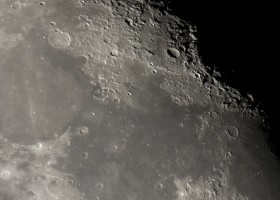
Throughout countless centuries, humanity has gazed upon a magnificent celestial entity known as the Moon, which serves as a satellite to our planet Earth. In the early days of astronomical exploration, these ancient stargazers were captivated by the presence of dark areas scattered across the lunar surface, theorizing that they might be vast bodies of water akin to seas and oceans. However, the true nature of these enigmatic markings remains a subject of intrigue.
Distinctive Features of the Moon as Earth’s Satellite
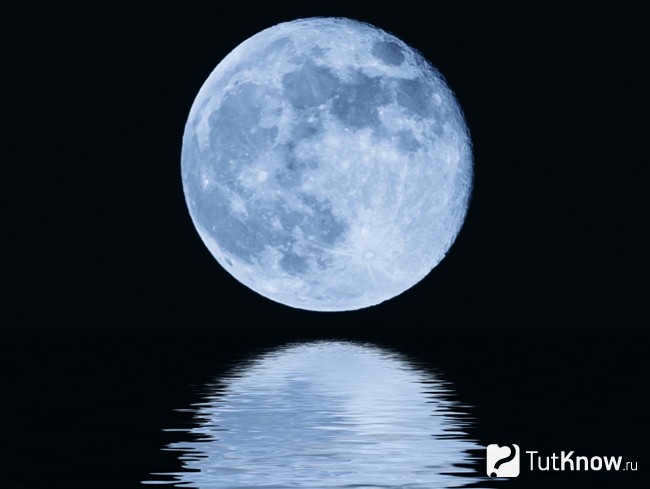
The Moon is our planet’s nearest and sole satellite to the Sun, as well as the second most prominent celestial object in the sky. It is the only astronomical body that humans have ever visited.
Various hypotheses exist regarding the origin of the Moon:
- The theory suggests that the Moon was formed from fragments of the planet Phaethon, which orbited the asteroid belt between Mars and Jupiter and collided with a comet. Some of these fragments were drawn towards the Sun, while one ended up forming a satellite system around Earth.
However, as scientists discovered the extreme temperatures on the Moon, reaching +120°C during the day and -160°C at night, as well as the absence of an atmosphere, they concluded that the presence of water on the Moon was highly unlikely. Nevertheless, the traditional name “Lunar Seas and Oceans” continued to be used.
On July 21, 1969, a significant event occurred in the field of astronautics – the historic landing of a human being on the Moon. This incredible achievement was accomplished by American astronauts Neil Armstrong and Edwin Aldrin. Despite some recent skeptics questioning the authenticity of this event, the fact remains that it was a monumental moment in human history.
The Moon is situated at a considerable distance from Earth, measuring approximately 384,467 kilometers, which is roughly equivalent to 30 times the diameter of our planet. In relation to Earth, the Moon has a diameter slightly larger than a quarter of our planet’s size and completes a full revolution around it on an elliptical orbit lasting 27.32166 days.
The composition of the Moon includes a crust, mantle, and core. The surface of the Moon is coated with a combination of dust and rocky fragments resulting from frequent collisions with meteorites. Due to its extremely thin atmosphere, the Moon experiences significant temperature fluctuations on its surface, ranging from -160°C to +120°C. Conversely, the temperature of the rock remains constant at -35°C when measured at a depth of 1 meter. The Moon’s rarefied atmosphere also contributes to its perpetually black sky, in contrast to Earth’s blue sky during clear weather.
Surface map of the Moon
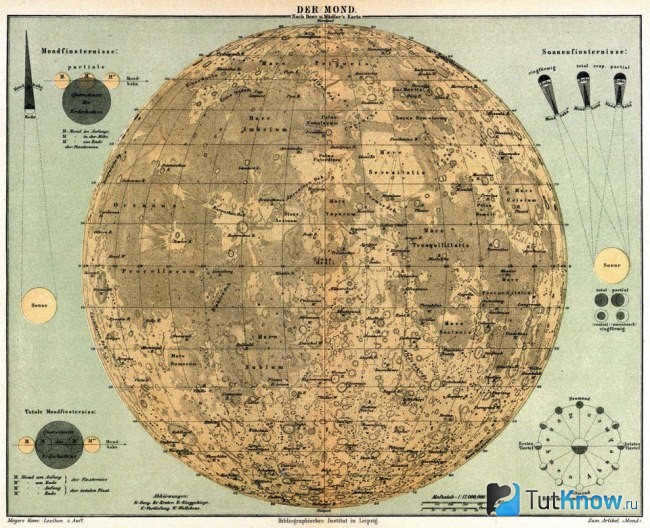
When observing the Moon from our planet, it is possible to see various light and dark spots in different shapes and sizes. The lunar surface is covered with craters of different diameters, ranging from a meter to hundreds of kilometers.
In the 17th century, scientists hypothesized that the dark spots represented seas and oceans on the Moon, assuming that it had water just like the Earth. The light-colored areas were believed to be land. In 1651, Italian scientist Giovanni Riccioli created the first map of the Moon’s seas and craters, assigning them names that are still in use today. Later on, as mountains were discovered on the Moon by Galileo, they were also given names similar to those found on Earth.
All of this information is meticulously documented on the lunar map, which displays both hemispheres of the Moon. This map is widely used in the field of astronomy, as scientists and researchers are not only hopeful of returning to the Moon, but also of establishing bases, conducting mineral exploration, and even creating a colony for permanent human residence.
Mining Systems and Lunar Craters
Lunar craters are one of the most prominent features on the Moon’s surface. These craters are formed as a result of numerous meteorite and asteroid impacts over millions of years. Even without the use of optical instruments, these distinctive and awe-inspiring cosmic formations can be observed on a clear night under a full moon. Upon closer inspection, their uniqueness and grandeur become even more apparent.
Origins and Historical Background of the “Lunar Scars”

In the year 1609, the renowned scientist Galileo Galilei developed the world’s first telescope and had the unique opportunity to observe the Moon at various magnifications. It was Galileo who first noticed the presence of craters on the lunar surface, which were surrounded by “ring” mountains. These formations were subsequently named craters. Let’s now delve into the reasons behind the existence of craters on the Moon and how they came to be.
The majority of these craters were formed long after the formation of our solar system, during a period when the Moon was bombarded by celestial bodies left over from the destruction of other planets. These bodies were moving at incredibly high speeds and were present in large numbers. This era came to an end approximately 4 billion years ago. While the Earth was able to mitigate the effects of this bombardment through its atmosphere, the Moon, which lacks an atmosphere, was unable to do so.
The beliefs of astronomers regarding the origins of craters have undergone continuous evolution throughout the centuries. Various theories, including volcanic activity and the suggestion of craters forming on the Moon through the involvement of “space ice,” have been contemplated. However, the extensive examination of the lunar surface, made possible in the 20th century, overwhelmingly supports the impact theory, attributing the majority of craters to meteorite collisions.
Elaboration on lunar depressions
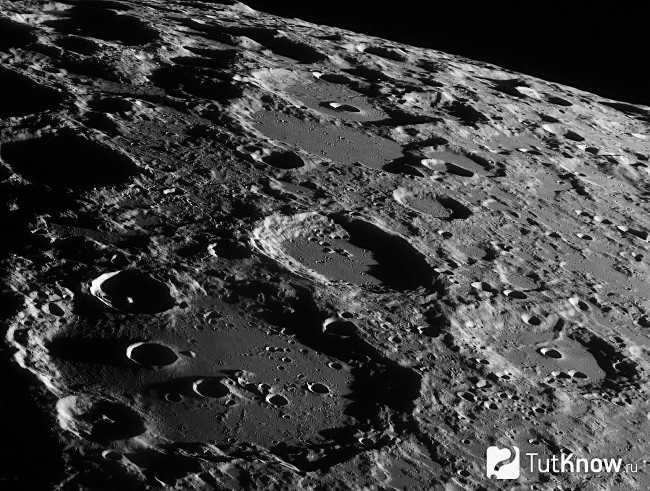
Galileo, in his reports and writings, made a comparison between the craters on the moon and the eye-like patterns on the tails of peacocks.
The most distinctive characteristic of lunar mountains is their ring-like appearance, which is absent on Earth. Externally, a lunar crater takes the form of a depression, surrounded by tall circular ridges that cover the entire surface of the Moon.
Lunar craters bear some resemblance to volcanic craters on Earth, although the peaks of lunar mountains are less pointed and more elliptical in shape. When observing a crater from the sunlit side, it becomes evident that the shadows cast by the mountains within the crater are larger than those outside. This suggests that the bottom of the crater lies at a lower elevation than the lunar surface itself.
The sizes of craters on the Moon are variable in terms of both diameter and depth. The diameter can range from a few meters to as large as one hundred kilometers.
As the size of the crater increases, so does its depth. The depth can reach up to 100 meters. The outer rim of larger lunar craters, known as “lunar bowls”, can rise above the surface by up to 5 kilometers.
Among the distinctive features of lunar craters, the following can be identified:
- Al-Battani C is a spherical crater with a sharp rim and a diameter of up to 10 kilometers.
The biggest craters on the Moon
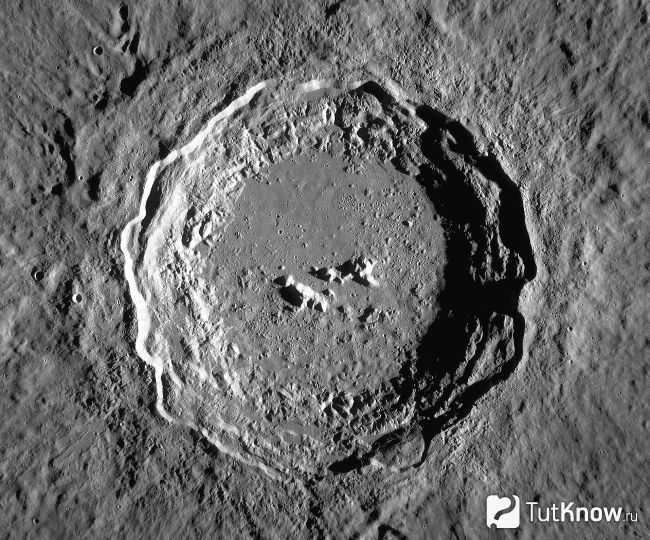
The exploration of lunar craters has a rich history, evident from the names bestowed upon them by their discoverers. When Galileo first observed these craters through his telescope, various scientists took it upon themselves to create a map and assigned their own names to them. This led to the emergence of names such as the lunar mountains of the Caucasus, Vesuvius, and the Apennines.
Craters were also named after notable scientists like Plato, Ptolemy, Galileo, and even in honor of St. Catherine. The backside map of the Moon, which was publicized by Soviet scientists, brought about the appearance of craters named after Tsiolkovsky, Gagarin, Korolev, and others.
Among the officially listed craters, the largest one is Hertzsprung, boasting a diameter of 591 kilometers. Unfortunately, this crater remains unseen by us as it is situated on the invisible side of the Moon. It is a massive crater that contains smaller craters within it, forming a structure known as a multi-ring structure.
The Ptolemy crater, which is approximately 180 kilometers wide, is the third massive lunar crater.
Exploring the Moon’s Oceans and Seas
Lunar seas are an intriguing feature on the moon’s surface, appearing as large dark spots that have fascinated astronomers for generations.
The notion of sea and ocean on the lunar surface
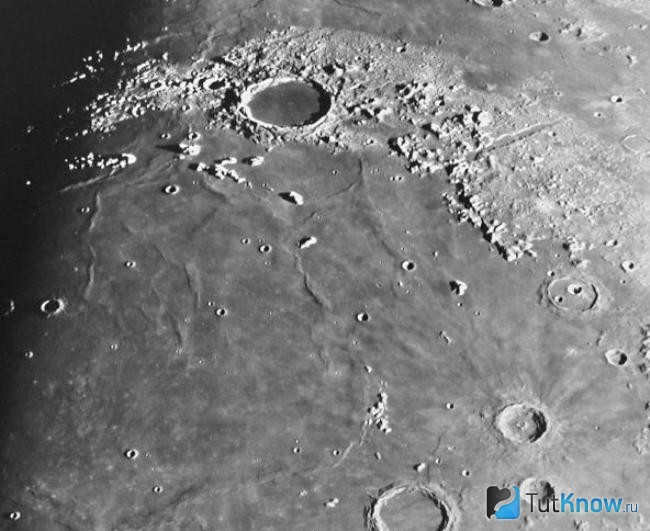
The appearance of seas on lunar maps can be traced back to the invention of the telescope. When Galileo Galilei first observed these dark spots, he mistakenly believed that they were bodies of water.
Despite the later discovery that the Moon lacks an atmosphere and therefore cannot have any liquid, the term “seas” has persisted on lunar maps. This naming convention has remained in place even after extensive study of the Moon’s visible surface.
The lunar seas, which are vast low-lying areas with flat bottoms, are actually flooded with magma. These dark valleys, visible from Earth, bear witness to ancient volcanic activity that shaped the Moon’s topography billions of years ago. Spanning from 200 to 1000 kilometers across, these areas are truly remarkable features.
The reason why the seas on the Moon appear dark is because they have a poor ability to reflect sunlight. These lunar seas can reach depths of up to 3 km, which is equivalent to the size of the Sea of Rains.
Among these seas, the largest one is called the Ocean of Storms, which stretches for a length of 2000 km.
What sets the visible seas on the Moon apart is that they are situated within circular mountain ranges, each of which has its own name. For instance, the Sea of Clarity is located near the Serpentine Ridge. This sea has a diameter of 700 kilometers, but its most notable feature is the variety of colors displayed by the lava that covers its surface. Additionally, scientists have discovered a significant positive gravity anomaly within the Sea of Clarity.
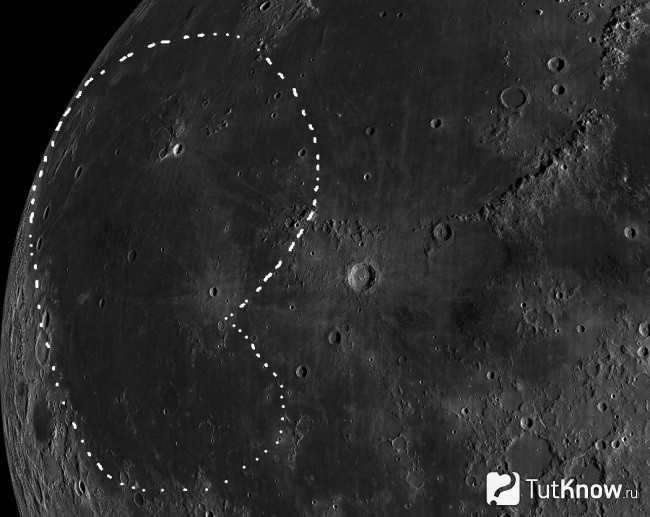
Among the vast bodies of water on the Moon, we can find the Seas of Moisture, Abundance, Rains, Waves, Clouds, Islands, Crisis, Foam, and Cognizance. Interestingly, on the opposite side of the Moon, there is a sea known as the Sea of Moscow.
In addition to the primary Ocean of Storms and the various seas, the Moon also features bays, lakes, and even swamps that have been officially named. Let’s explore some of the most intriguing ones.
The lakes on the Moon have been assigned captivating names like the Lake of Awe, Spring, Oblivion, Tenderness, Perseverance, and Hate. As for the bays, they include Fidelity, Love, Tenderness, and Luck. The swamps on the Moon also have corresponding names – Rotting, Sleep, and Epidemic.
Curious tidbits about the moon’s maria
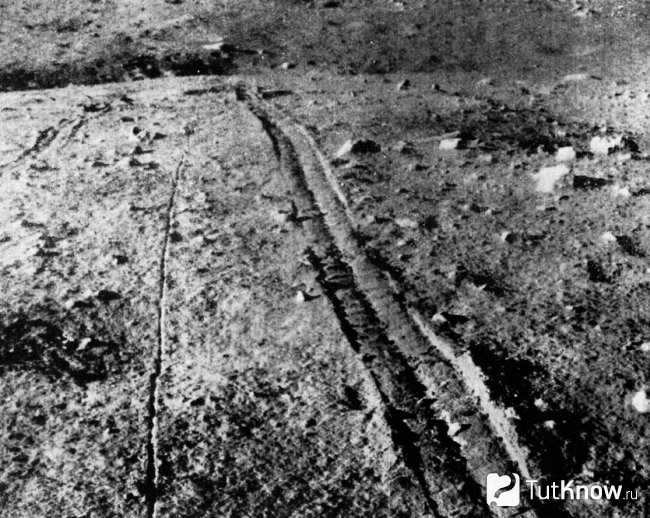
There are several interesting facts about the lunar seas:
- The Sea of Tranquility on the Moon gained its fame as the location of the first human landing on the Moon in 1969, when American astronauts set foot on its surface.

